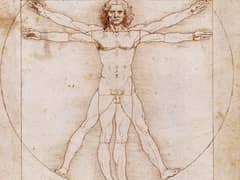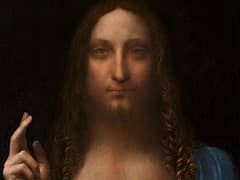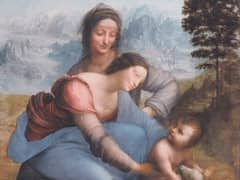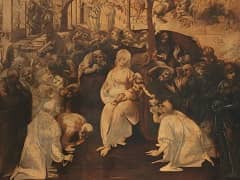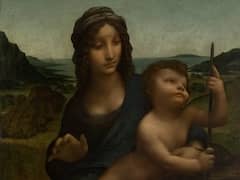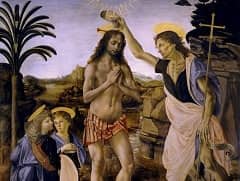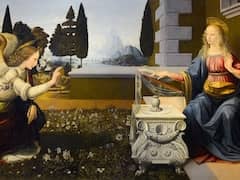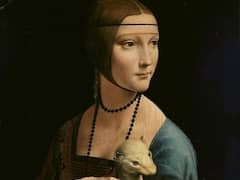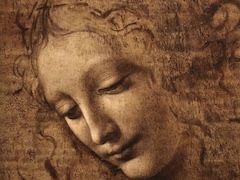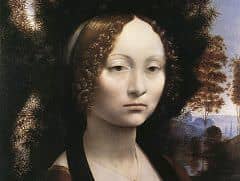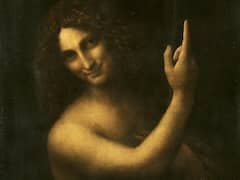Dreyfus Madonna - by Leonardo da Vinci
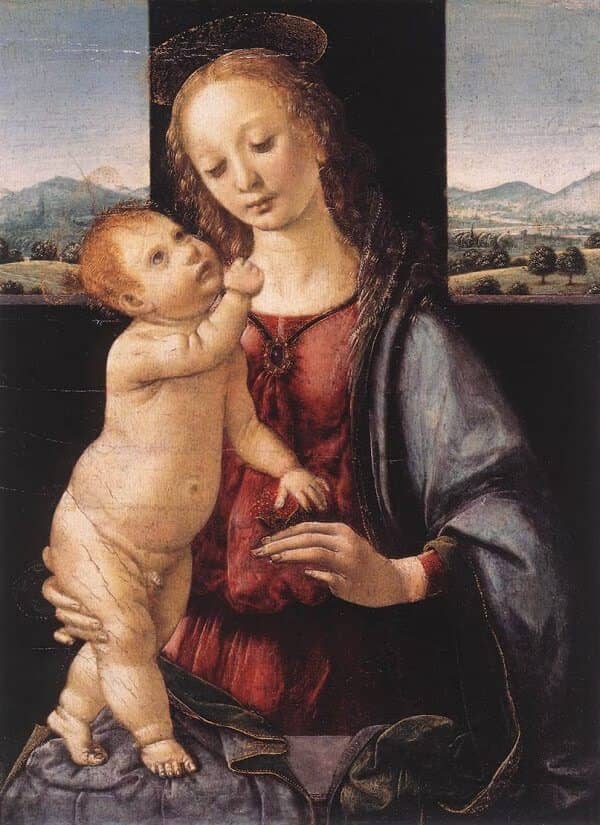
The Dreyfus Madonna (named for Gustave Dreyfus who owned the painting from 1872 until 1930) has critics divided over who painted this small panel. Also known as the Madonna with the Pomegranate it has been variously attributed to Leonardo, Verrocchio and Lorenzo di Credi.
Showing strong similarities to Madonna with the Carnation it has a Venetian flavour and the style gives it a suggested date of around 1469. This coincides with the year Verrocchio made his trip to Venice, closely followed by Leonardo.
It is often difficult to distinguish the works of masters over skilled pupils. At the time it was common practice for a master to give lesser commissions over to those in his workshop. Larger works were frequently the effort of many painters with the master doing the main sections and the assistants being allocated areas like backgrounds or secondary figures (this can be seen in the Baptism of Christ, also documented on this Web site). The master would then approve that the work had been done to his standards.
Dreyfus Madonna has a lack of harmony, the posture of the child is awkward and the figures hardly relate to the background or architecture. Despite this there are details which are the signature of Leonardo - the Virgin's crooked finger and the smoky shadowing or sfumato around her face. Opponents of the suggestion that this painting was by Leonardo point to parallels between this panel and the works of Lorenzo di Credi. Which artist from Verrocchio's workshop was ultimately responsible is certain to remain the subject of much debate.



